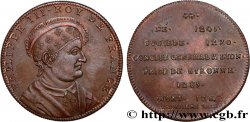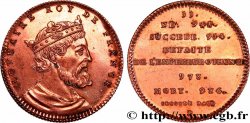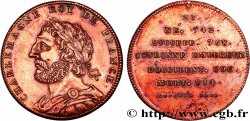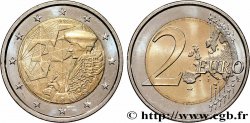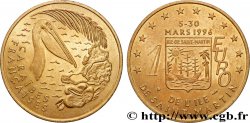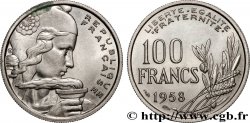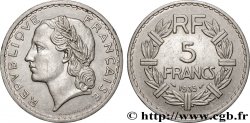E-auction 645-654448 - SÉRIE MÉTALLIQUE DES ROIS DE FRANCE Médaille, Philippe IV Le Bel - 45 - refrappe ultra-moderne
得先注册又得到批准才可以报价。为了报价注册. 客户应该得到公司允许,那种过程需要 48 个小时。别等出售结束那一天才登记。您报价的话等于您赞成买那物品,而且按« 保价 » 证明您接受 cgb.fr 因特网拍卖使用法.
报价时只可以出全数值欧元总额。物品描述也说明销售结束时间,结束后出价都不会生效。 报价命令转达有时变动,等到最后秒钟增加否决的可能会。想多了解的话请注意 因特网拍卖常问
购货人不付费
购货人不付费
种类 Médaille, Philippe IV Le Bel - 45 - refrappe ultra-moderne
日期: n.d.
材质 gilt bronze
直径 34 mm
模子方针 12 h.
重量 20,95 g.
侧面 Cannelée
印模 corne d’abondance
稀少度 R1
关于品相的说明
Patine hétérogène avec des traces de manipulation et rayures
正面
正面的文字 PHILIPPE IV ROY DE FRAN. ET DE NAVAR..
正面的说明书 Buste imaginaire couronné et drapé à droite.
背面
背面的文字 45. / NÉ 1268. / SUCCEDE. 1285. / LIBERTEZ DU ROIAUME / MAINTENUES. / CONCILE GENERAL / A VIENNE. / MORT. 1314. / TROISIEME RACE. / P..
背面的说明书 Légende en 10 lignes.
评论
Médaille conservée sous capsule et dorée à l’or fin. Refrappe ultra-moderne des séries de jetons.
Philippe IV de France, dit Philippe le Bel (Fontainebleau, avril/juin 1268 - Fontainebleau, 29 novembre 1314) fils Philippe III de France (1245-1285) et de sa première épouse Isabelle d'Aragon. Il fut roi de France de 1285 à 1314, onzième roi de la dynastie des Capétiens directs.
Son père confie une partie de l'éducation du jeune Philippe à Guillaume d'Ercuis, son aumônier. À la différence de son père, Philippe le Bel reçoit par le soin de son précepteur une bonne éducation Il comprend le latin et aime étudier.
Surnommé par ses ennemis tout comme par ses admirateurs le « roi de marbre » ou « roi de fer », il se démarque par sa personnalité rigide et sévère. L'un de ses plus farouches opposants, l'évêque de Pamiers Bernard Saisset, dit d'ailleurs de lui : « Ce n'est ni un homme ni une bête. C'est une statue. » Philippe le Bel fut un roi qui souleva au cours de son règne beaucoup de polémiques, le pape Boniface VIII le traitant par exemple de « faux-monnayeur ».
Sous le règne de Philippe IV, les traditions féodales sont abandonnées pour mettre en place une administration moderne. Mais la centralisation monarchique mécontente les grands seigneurs et les nouveaux impôts dressent les bourgeois contre le pouvoir royal.
Grâce à l'aide de juristes, notamment son fidèle collaborateur Guillaume de Nogaret , Philippe IV transforme véritablement un État encore féodal en une monarchie moderne où la volonté du roi s'impose à tous, et un impôt national est prélevé sur tout le royaume de France.
Son règne est particulièrement agité sur le plan monétaire. Le roi et ses conseillers multiplient les émissions de nouvelles monnaies. Aux dévaluations succèdent les réévaluations, qui donnent un sentiment d'incohérence de la politique royale. Ces mutations monétaires aboutissent finalement à un mécontentement général dans le royaume. Entre 1306 et sa mort, le roi fait face à des émeutes populaires mais aussi à des ligues nobiliaires qui exigent, entre autres, le retour à la bonne monnaie.
Pour la suite de la biographie, voir http://fr.wikipedia.org/wiki/Philippe_IV_de_France.
Medal preserved in a capsule and gilded with fine gold. Ultra-modern re-minting of token series.
Philip IV of France, known as Philip the Fair (Fontainebleau, April/June 1268 - Fontainebleau, November 29, 1314) son of Philip III of France (1245-1285) and his first wife Isabelle of Aragon. He was King of France from 1285 to 1314, eleventh king of the direct Capetian dynasty.
His father entrusted part of the education of the young Philippe to Guillaume d'Ercuis, his chaplain.. Unlike his father, Philip the Fair received a good education from his tutor. He understood Latin and enjoyed studying..
Nicknamed by his enemies and admirers alike the \\\"marble king\\\" or \\\"iron king\\\", he stood out for his rigid and severe personality.. One of his fiercest opponents, the Bishop of Pamiers Bernard Saisset, said of him: \\\"He is neither a man nor a beast.\\\". It's a statue. » Philip the Fair was a king who aroused much controversy during his reign, with Pope Boniface VIII, for example, calling him a \\\"counterfeiter.\\\".
During the reign of Philip IV, feudal traditions were abandoned to establish a modern administration.. But the monarchical centralization displeased the great lords and the new taxes set the bourgeoisie against the royal power..
With the help of jurists, notably his faithful collaborator Guillaume de Nogaret, Philip IV truly transformed a still feudal state into a modern monarchy where the will of the king was imposed on all, and a national tax was levied on the entire kingdom of France..
His reign was particularly turbulent on the monetary level.. The king and his advisors multiply the issues of new coins. Devaluations are followed by revaluations, which give a feeling of incoherence in royal policy.. These monetary changes ultimately led to general discontent in the kingdom.. Between 1306 and his death, the king faced popular riots but also noble leagues which demanded, among other things, a return to good coin..
For the rest of the biography, see http://fr. Wikipedia. org/wiki/Philippe_IV_de_France
Philippe IV de France, dit Philippe le Bel (Fontainebleau, avril/juin 1268 - Fontainebleau, 29 novembre 1314) fils Philippe III de France (1245-1285) et de sa première épouse Isabelle d'Aragon. Il fut roi de France de 1285 à 1314, onzième roi de la dynastie des Capétiens directs.
Son père confie une partie de l'éducation du jeune Philippe à Guillaume d'Ercuis, son aumônier. À la différence de son père, Philippe le Bel reçoit par le soin de son précepteur une bonne éducation Il comprend le latin et aime étudier.
Surnommé par ses ennemis tout comme par ses admirateurs le « roi de marbre » ou « roi de fer », il se démarque par sa personnalité rigide et sévère. L'un de ses plus farouches opposants, l'évêque de Pamiers Bernard Saisset, dit d'ailleurs de lui : « Ce n'est ni un homme ni une bête. C'est une statue. » Philippe le Bel fut un roi qui souleva au cours de son règne beaucoup de polémiques, le pape Boniface VIII le traitant par exemple de « faux-monnayeur ».
Sous le règne de Philippe IV, les traditions féodales sont abandonnées pour mettre en place une administration moderne. Mais la centralisation monarchique mécontente les grands seigneurs et les nouveaux impôts dressent les bourgeois contre le pouvoir royal.
Grâce à l'aide de juristes, notamment son fidèle collaborateur Guillaume de Nogaret , Philippe IV transforme véritablement un État encore féodal en une monarchie moderne où la volonté du roi s'impose à tous, et un impôt national est prélevé sur tout le royaume de France.
Son règne est particulièrement agité sur le plan monétaire. Le roi et ses conseillers multiplient les émissions de nouvelles monnaies. Aux dévaluations succèdent les réévaluations, qui donnent un sentiment d'incohérence de la politique royale. Ces mutations monétaires aboutissent finalement à un mécontentement général dans le royaume. Entre 1306 et sa mort, le roi fait face à des émeutes populaires mais aussi à des ligues nobiliaires qui exigent, entre autres, le retour à la bonne monnaie.
Pour la suite de la biographie, voir http://fr.wikipedia.org/wiki/Philippe_IV_de_France.
Medal preserved in a capsule and gilded with fine gold. Ultra-modern re-minting of token series.
Philip IV of France, known as Philip the Fair (Fontainebleau, April/June 1268 - Fontainebleau, November 29, 1314) son of Philip III of France (1245-1285) and his first wife Isabelle of Aragon. He was King of France from 1285 to 1314, eleventh king of the direct Capetian dynasty.
His father entrusted part of the education of the young Philippe to Guillaume d'Ercuis, his chaplain.. Unlike his father, Philip the Fair received a good education from his tutor. He understood Latin and enjoyed studying..
Nicknamed by his enemies and admirers alike the \\\"marble king\\\" or \\\"iron king\\\", he stood out for his rigid and severe personality.. One of his fiercest opponents, the Bishop of Pamiers Bernard Saisset, said of him: \\\"He is neither a man nor a beast.\\\". It's a statue. » Philip the Fair was a king who aroused much controversy during his reign, with Pope Boniface VIII, for example, calling him a \\\"counterfeiter.\\\".
During the reign of Philip IV, feudal traditions were abandoned to establish a modern administration.. But the monarchical centralization displeased the great lords and the new taxes set the bourgeoisie against the royal power..
With the help of jurists, notably his faithful collaborator Guillaume de Nogaret, Philip IV truly transformed a still feudal state into a modern monarchy where the will of the king was imposed on all, and a national tax was levied on the entire kingdom of France..
His reign was particularly turbulent on the monetary level.. The king and his advisors multiply the issues of new coins. Devaluations are followed by revaluations, which give a feeling of incoherence in royal policy.. These monetary changes ultimately led to general discontent in the kingdom.. Between 1306 and his death, the king faced popular riots but also noble leagues which demanded, among other things, a return to good coin..
For the rest of the biography, see http://fr. Wikipedia. org/wiki/Philippe_IV_de_France








 对产品描述纠错
对产品描述纠错 打印
打印 分享我的选择
分享我的选择 提问
提问 Consign / sell
Consign / sell
 产品介绍
产品介绍